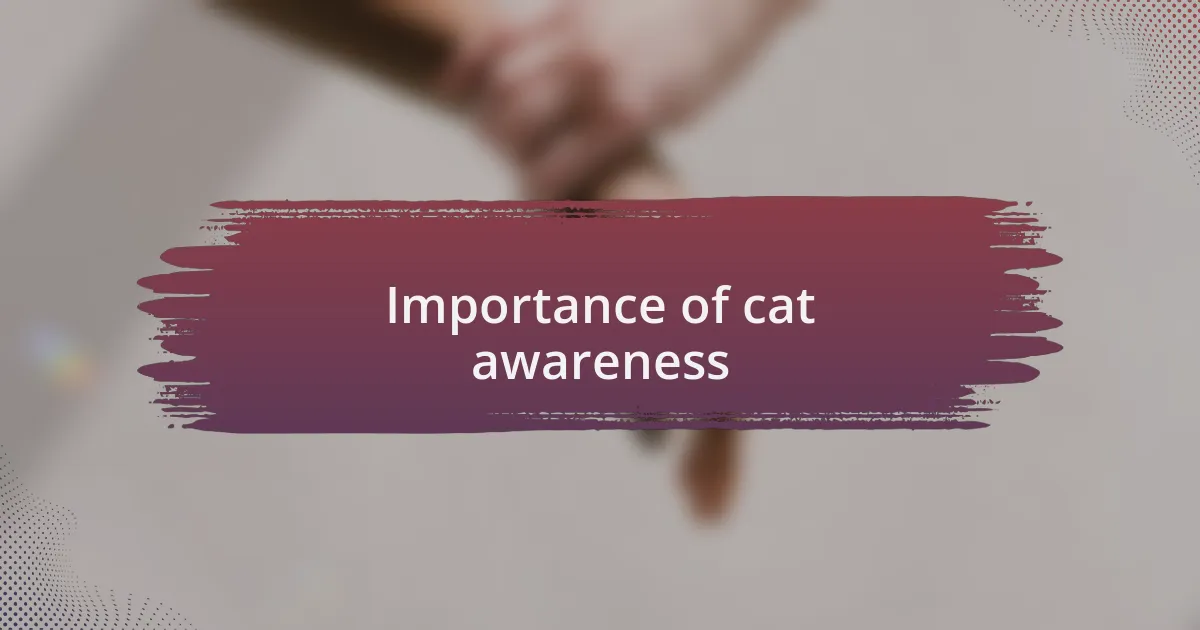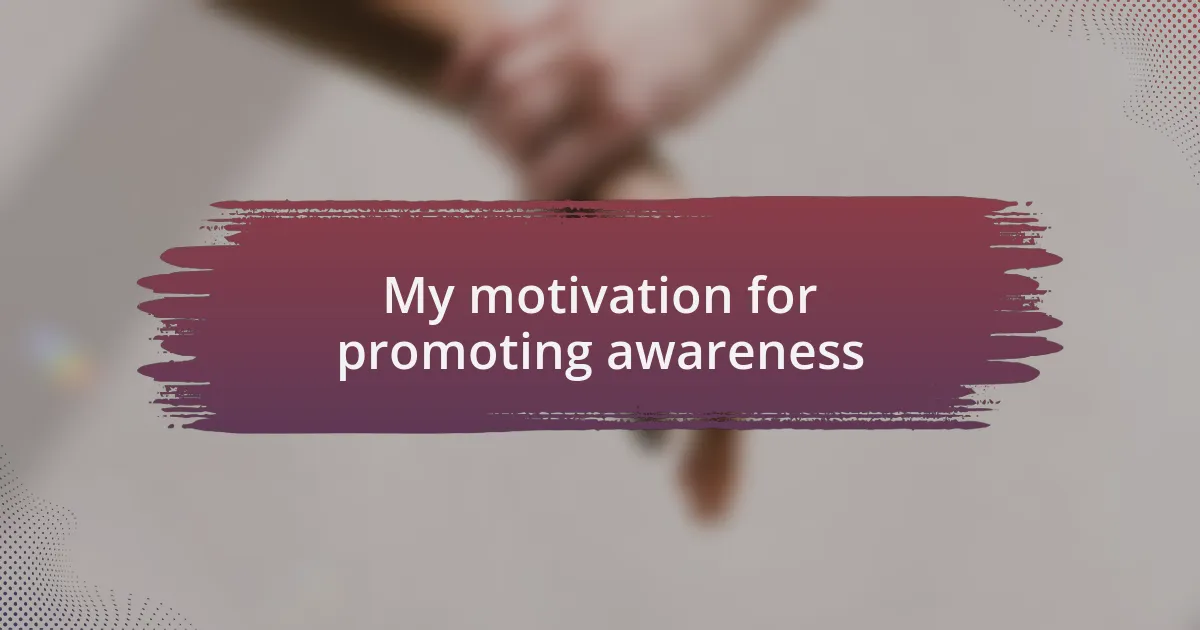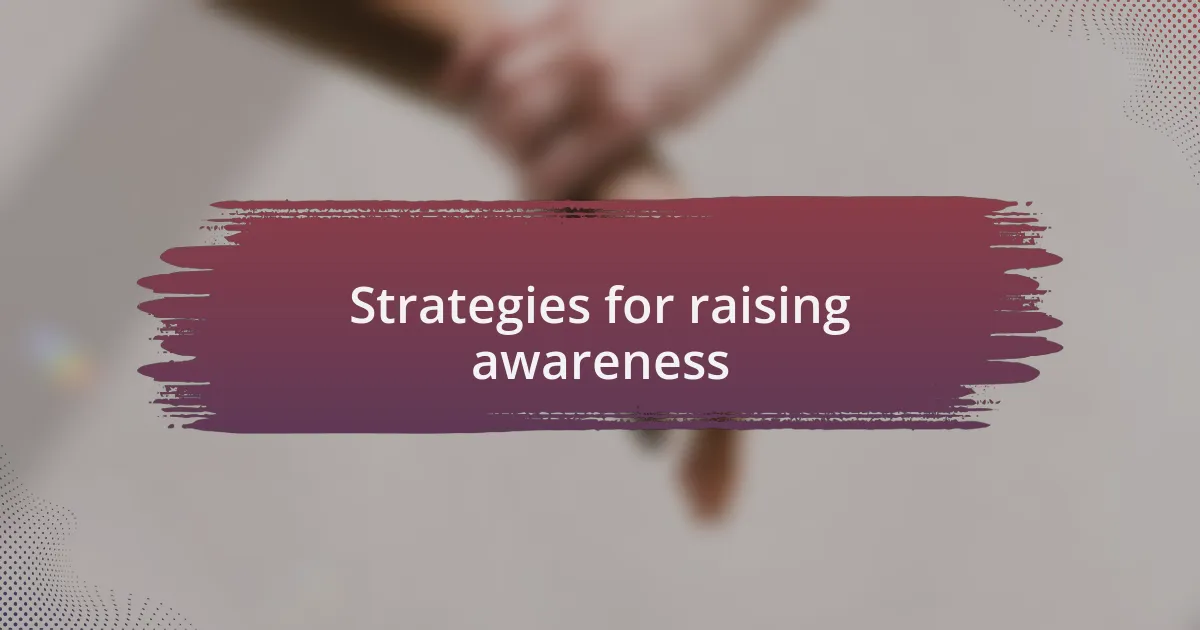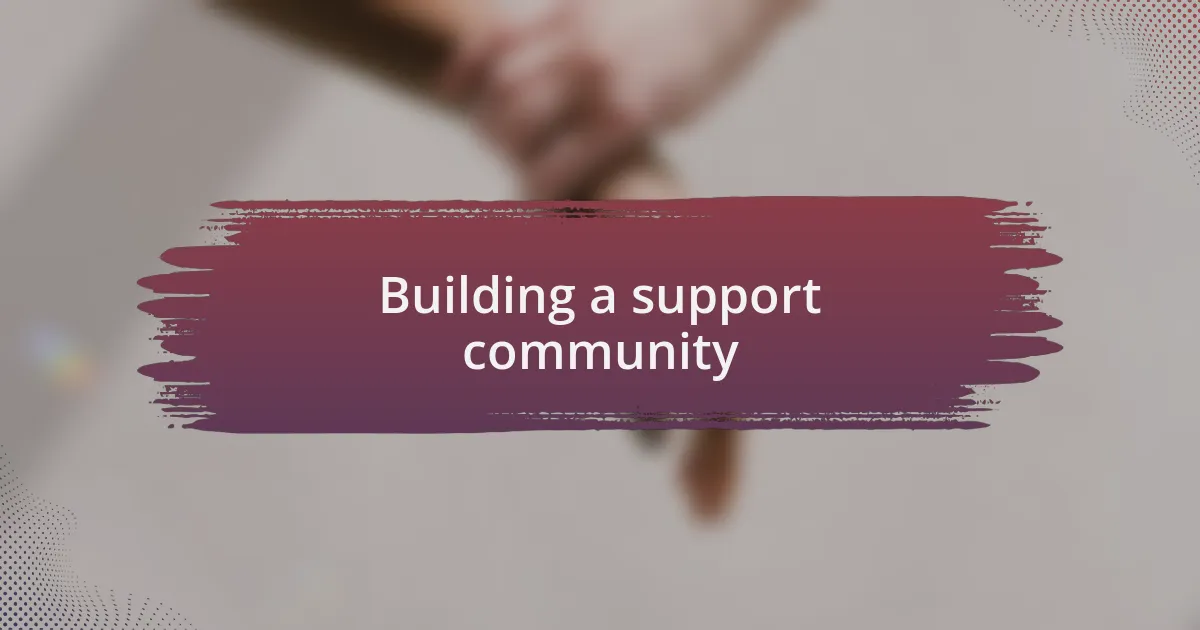Key takeaways:
- Cat abuse trauma deeply affects animals, leading to anxiety and behavioral issues that complicate rescue and adoption efforts.
- Raising awareness about cat abuse helps communities identify signs of trauma, fostering empathy and responsibility towards animal welfare.
- Personal experiences with abused cats motivate advocacy and education, creating a ripple effect of compassion and responsibility.
- Successful strategies for raising awareness include hosting community events, leveraging social media, and collaborating with local businesses.

Understanding cat abuse trauma
Cat abuse trauma is a profound and sensitive issue, often leaving lasting scars on both the mind and body of affected animals. I remember meeting a rescue cat whose eyes reflected a deep-seated fear; it was heartbreaking to see how past abuse had stolen her trust in humans. How could someone inflict such pain on a creature so innocent and loving?
The emotional toll of cat abuse is often invisible but incredibly real. An abusive experience can lead to anxiety, depression, and behavioral problems in cats, making it difficult for them to adapt to new environments. I often wonder, can we ever truly comprehend the silent battles they face? Understanding these struggles is crucial if we are to help these animals heal.
Moreover, the impact of trauma extends beyond the individual cat. Victims often develop coping mechanisms that can manifest as aggression or withdrawal, stirring up challenges in rescue and adoption efforts. In my experience, every rescue cat I’ve encountered has reminded me that they, too, have a story worth telling—one that deserves to be heard and validated.

Importance of cat awareness
Cat awareness is essential not only for the welfare of felines but also for educating communities about the signs of abuse. I recall a time at a local shelter when we hosted an awareness event. Many attendees were surprised to learn that subtle signs, such as a cat’s tucked tail or avoidance of eye contact, could indicate past traumas. It made me realize how vital it is to share this knowledge so we can protect these vulnerable animals.
Understanding what constitutes cat abuse is crucial for creating a compassionate society. I often think about a friend who adopted a cat with an abusive history. Initially, the cat was terrified of sudden movements, yet with patience and love, she would slowly inch closer to my friend. This transformation is a powerful testament to the importance of awareness; it equips potential owners with the tools to create safe and nurturing environments.
Raising awareness about cat abuse can also foster empathy and responsibility within communities. Every time I share a story about a cat’s recovery from trauma, I see a shift in perception among those listening. It’s a reminder that when we know better, we do better. Isn’t it our responsibility to advocate for those who cannot speak for themselves? Through increased awareness, we can collectively contribute to a future where no cat has to suffer in silence.

My motivation for promoting awareness
My motivation for promoting awareness stems from a deeply personal connection to the plight of abused cats. I remember the first rescue I brought home; her fearful eyes told a story of neglect and pain. Each time she flinched from a gentle touch, I felt a pang of guilt for the experiences she must have endured. How could I not share this experience and educate others about the silent suffering many felines face?
Every awareness campaign I participate in reminds me of the stories that need to be told. I often engage with community members who have never considered how the way they treat animals resonates deeply within their lives. Listening to their “aha” moments sparks a fire in me—realizing that we can change hearts and minds together is incredibly motivating. I believe that when we take the time to understand animals’ emotional landscapes, it cultivates a sense of responsibility toward their wellbeing.
Ultimately, my goal is to create a ripple effect of compassion that extends beyond individual households. I often ask myself: what if sharing awareness could save just one cat from a life of suffering? That thought inspires me daily, driving me to advocate for those without a voice and encouraging others to join in this crucial mission. Together, we can foster an environment where cats are not merely pets but cherished family members deserving of love and respect.

Strategies for raising awareness
One effective strategy I’ve found in raising cat awareness is hosting local events where people can meet the rescue cats in need of homes. When I organized a neighborhood cat fair, it struck me just how many attendees were moved by seeing these cats up close. There’s something powerful about direct interaction; people often connect emotionally when they can look into a cat’s eyes and see their vulnerability firsthand.
Another approach I use is leveraging social media to share stories and educate followers about cat abuse and rescue efforts. I remember posting a video of a shy cat slowly coming out of her shell, illustrating the transformation that love and safety can bring. This not only captivated my followers but encouraged them to share the message, amplifying awareness beyond my immediate reach. Doesn’t the idea of a single story inspiring countless conversations feel empowering?
Collaboration with local businesses has proven beneficial as well. When I partnered with a coffee shop to host an “Adopt a Cat” day, we created a space for discussions about abuse and care while drawing in patrons who might not typically engage with animal welfare topics. It’s fascinating how a simple cup of coffee can lead to meaningful conversations about compassion and responsibility. Have you considered what unique platforms you could use in your own community to spark such discussions?

Building a support community
Building a support community around cat awareness requires genuine engagement and a shared sense of purpose. I recall attending a community meeting where passionate individuals gathered to discuss local animal welfare issues. It was inspiring to see how everyone brought their unique experiences to the table, creating a collective energy that fueled our commitment to change. This setting made me realize that when we come together, we amplify our voices and strengthen our impact.
In my experience, creating online forums or support groups has also been a game-changer. I started a Facebook group where people could share their stories and seek advice about caring for at-risk cats. One day, a member posted about rescuing a cat that she initially didn’t want to adopt but felt compelled to help. The support and encouragement from the group helped her realize the profound difference she could make, and I will never forget the joy in her updates as the cat thrived. Isn’t it amazing how a simple space for dialogue can foster such transformative journeys?
Building in-person and online connections is essential, but I’ve found that celebrating our small victories strengthens community bonds. After another successful adoption event, we collectively shared stories and photos on social media, and the sense of connection was palpable. It was a reminder that each rescue, each shared resource, contributes to a larger movement. How do you celebrate your wins? Acknowledging these moments can inspire others and cultivate a supportive environment that encourages continuous advocacy.